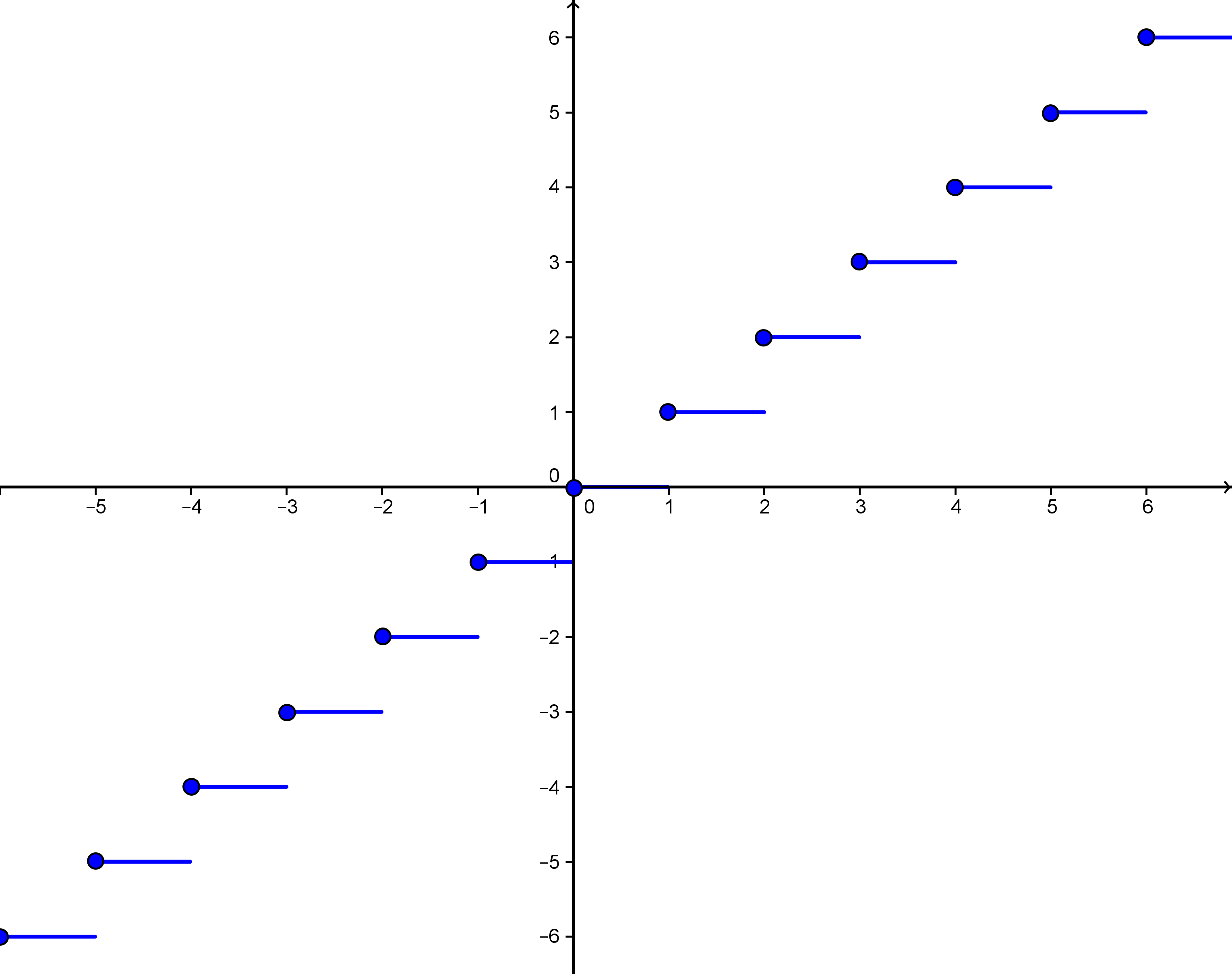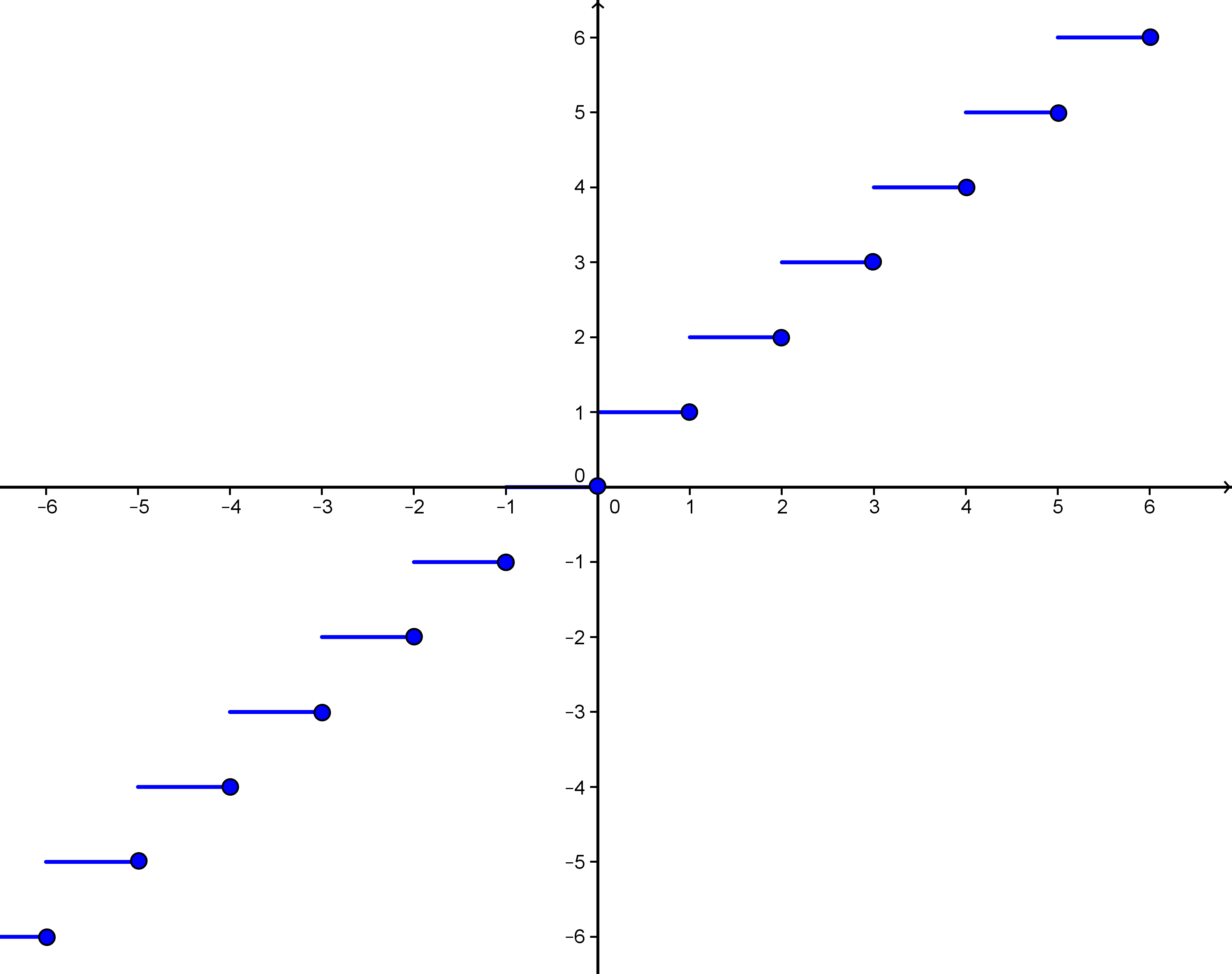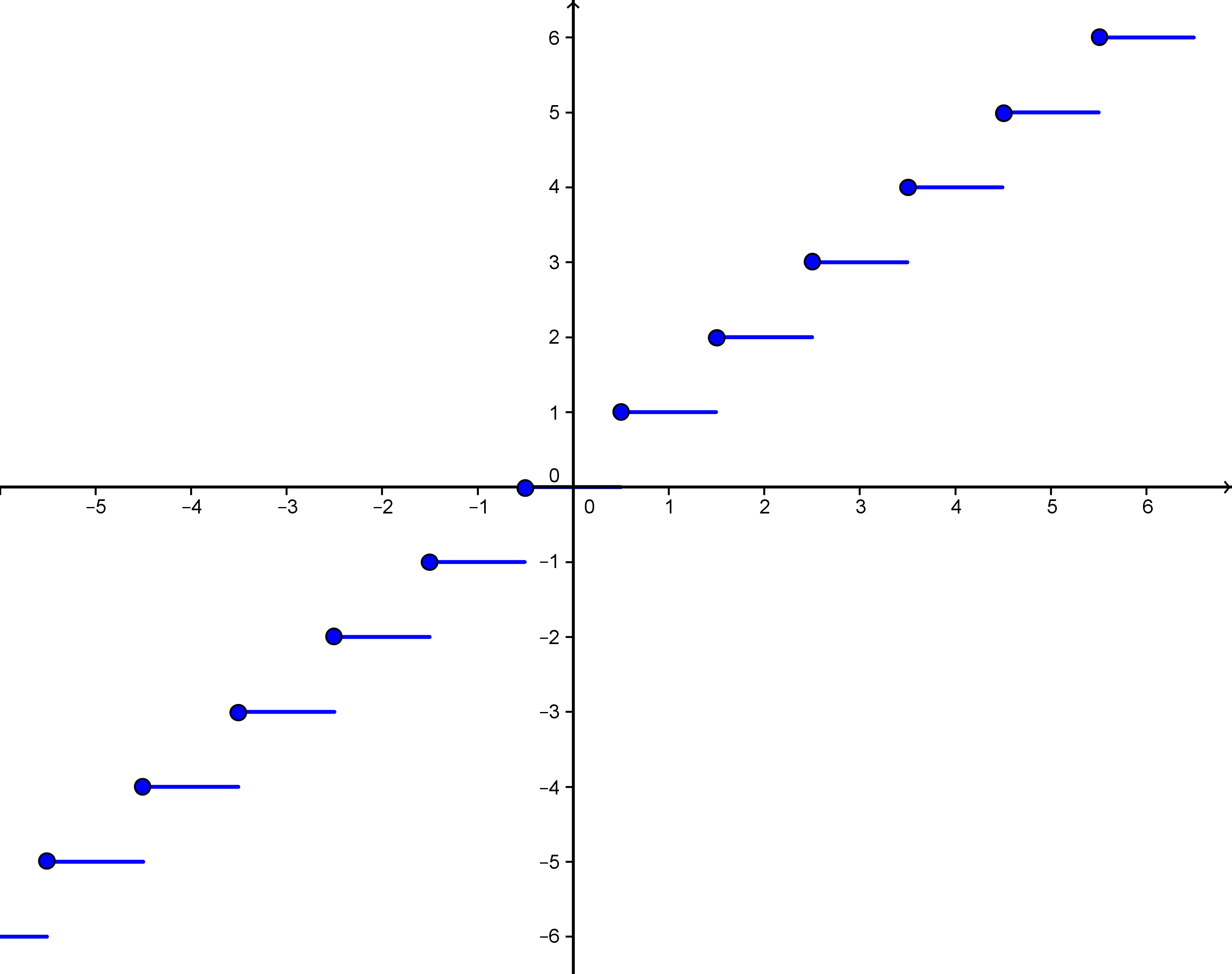Chapter 11 Language of Descriptive Statistics
Section 11.1 Terminology and Language11.1.2 Rounding
The rounding of measurement values is an everyday process.Info 11.1.3
In principle, there are three ways of rounding:
- Rounding (off) using the function .
- Rounding (up) using the function .
- Rounding using the function (sometimes also called function).
The function is defined as
If is a real number, then is the largest integer that is smaller than or equal to . It results from rounding off the value of . If a positive real number is written as a decimal, then equals the integer on the left of the decimal point: rounding (off) cuts off the digits on the right of the decimal point. For example but . The function is a step function with jumps (in more mathematical terms, jump discontinuities) of height at all points . The function values at the jumps always lie a step up. They are indicated by the small circles in the figure below, which shows the graph of the function.

Graph of the function
Let a real number be given, written as a decimal number
This number can be rounded to fractional digits () using the function by
This process of rounding cuts off the decimal after the th fractional digit. Thus, rounding using the function is in general a rounding off.
Example 11.1.4
Rounding the number to 2 fractional digits using the function results in
Alternatively, it can be rounded by cutting off the decimal after the second fractional digit (however, this is only possible if the number is given as a decimal which is rarely the case in a computer program).
Rounding the number to 4 fractional digits using the function results in
Rounding the number
to 2 fractional digits using the function results in
Alternatively, it can be rounded by cutting off the decimal after the second fractional digit (however, this is only possible if the number is given as a decimal which is rarely the case in a computer program).
Rounding the number to 4 fractional digits using the function results in
Rounding the number
to 2 fractional digits using the function results in
The rounding method using the function is often applied for calculating final grades in certificates ("academic rounding"). If a mathematics student has the individual grades
| Subject | Grade |
| Mathematics 1 | |
| Mathematics 2 | |
| Mathematics 3 |
Rounding to the first fractional digit using the function would result in the final grade of . The rounding methods for calculating final grades always have to be described exactly in the examination regulations.
The counterpart to the function is the (a.k.a. ceiling) function:
If is a real number, then is the smallest integer that is greater than or equal to . The function is a step function with jumps (jump discontinuities) of height at all points . The function values at the jumps always lie at the bottom. They are indicated by the small circles in the figure below showing the graph of the function.

Graph of the function
Let a real number be given as a decimal number
This number can be rounded to fractional digits () using the function by
Rounding using the function is in general a rounding up to the next decimal digit.
Example 11.1.6
Rounding the number to fractional digits using the function results in
Analogously, rounding the number to fractional digits using the function results in
Rounding the number to fractional digits using the function results in
Analogously, rounding the number to fractional digits using the function results in
Rounding the number to fractional digits using the function results in
The rounding method using the function is often applied, for example, in craftsmen's invoices. A craftsman is mostly paid by the hour. If a repair takes 50 minutes (i.e. hours as a decimal), then a craftsmen will round up and invoice a full working hour. Colloquially, rounding mostly means mathematical rounding:
The function is a step function with jumps (jump discontinuities) of height at all points . The function values at the jumps always lie a step up. They are indicated by the small circles in the figure below showing the graph of the function.

Graph of the function
Let a real number be given as a decimal number
This number can be rounded to fractional digits () using the function:
This rounding method is called mathematical rounding and corresponds to the "normal" rounding process.
Example 11.1.8
The number is rounded to one fractional digit using the function to
The number is rounded to one fractional digit using the function to
The number is rounded to two fractional digits using the function to
The number is rounded to seven fractional digits using the function to
The number is rounded to one fractional digit using the function to
The number is rounded to two fractional digits using the function to
The number is rounded to seven fractional digits using the function to
Exercise 11.1.9
Using the function, round the number to four fractional digits:
.
.
Exercise 11.1.10
Let the numbers
be given.
be given.
- Round each of the numbers and to fractional digits using the function.
The roundings result in
and .
- Round each of the numbers and to fractional digits using the function.
The roundings result in
and .
- Round each of the numbers and to fractional digits using the function.
The roundings result in
and .
 Onlinebrückenkurs Mathematik
Onlinebrückenkurs Mathematik